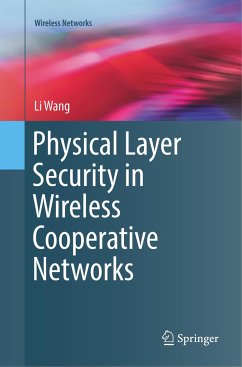
Securing Wireless Communications at the Physical Layer

PAYBACK Punkte
57 °P sammeln!
The book focuses on a recently emerging topic in security. Specifically, the book focuses on physical layer security. Whereas conventional security mechanisms involve cryptography that operates at higher layers of the protocol stack, the methods described in this book secure communications at the physical layer.
The area of physical layer security is an emerging field of research that has seen an explosion of research in the past few years. This trend is only expected to continue as there is a growing need to secure wireless communications without conventional cryptographic network security protocols.
The proposed book will consist of contributions from roughly a dozen of the leading research groups in this emerging area. For the first time, important results will be collected together. Important topics will include the secrecy rate of MIMO wireless systems, practical codes for the dissemination of secrets, and authentication of wireless transmitters using waveform-level properties.
The area of physical layer security is an emerging field of research that has seen an explosion of research in the past few years. This trend is only expected to continue as there is a growing need to secure wireless communications without conventional cryptographic network security protocols.
The proposed book will consist of contributions from roughly a dozen of the leading research groups in this emerging area. For the first time, important results will be collected together. Important topics will include the secrecy rate of MIMO wireless systems, practical codes for the dissemination of secrets, and authentication of wireless transmitters using waveform-level properties.
Wireless systems are becoming increasingly pervasive and securing these systems has been challenging, in large part due to the unique properties associated with wireless communications. Securing these networks has traditionally been approached by taking a conventional approach involving cryptographic protocols. Such an approach inherently seeks to secure the wireless network at the link layer and above, and consequently fails to leverage the most unique characteristic of wireless communication: its physical layer.
Securing Wireless Communications at the Physical Layer is a compilation of contributions by experts in wireless communications and security, and presents state-of-the-art results that examine the challenge of introducing security at the physical layer of a wireless system. Throughout this book there is an underlying theme that the rich multipath environment that is typical of wireless scenarios supports the establishment of new security services at the physical layer, including new mechanisms that establish cryptographic keys, that support communication with assured confidentiality, and that can authenticate transmitters in mobile environments. The book takes a holistic approach to covering topics related to physical layer security solutions, with contributions ranging from the theoretical underpinnings behind secure communications to practical systems validations that have been performed on real wireless systems. The book also covers topics related to ensuring that cooperative wireless communications at the physical layer is trustworthy. Additionally, the emerging area of modulation forensics, whereby a device is able to identify the modulation format being employed by other devices is explored.
Securing Wireless Communications at the Physical Layer will serve as a valuable reference to engineers and researchers in the fields of security and wireless communications.
Securing Wireless Communications at the Physical Layer is a compilation of contributions by experts in wireless communications and security, and presents state-of-the-art results that examine the challenge of introducing security at the physical layer of a wireless system. Throughout this book there is an underlying theme that the rich multipath environment that is typical of wireless scenarios supports the establishment of new security services at the physical layer, including new mechanisms that establish cryptographic keys, that support communication with assured confidentiality, and that can authenticate transmitters in mobile environments. The book takes a holistic approach to covering topics related to physical layer security solutions, with contributions ranging from the theoretical underpinnings behind secure communications to practical systems validations that have been performed on real wireless systems. The book also covers topics related to ensuring that cooperative wireless communications at the physical layer is trustworthy. Additionally, the emerging area of modulation forensics, whereby a device is able to identify the modulation format being employed by other devices is explored.
Securing Wireless Communications at the Physical Layer will serve as a valuable reference to engineers and researchers in the fields of security and wireless communications.














